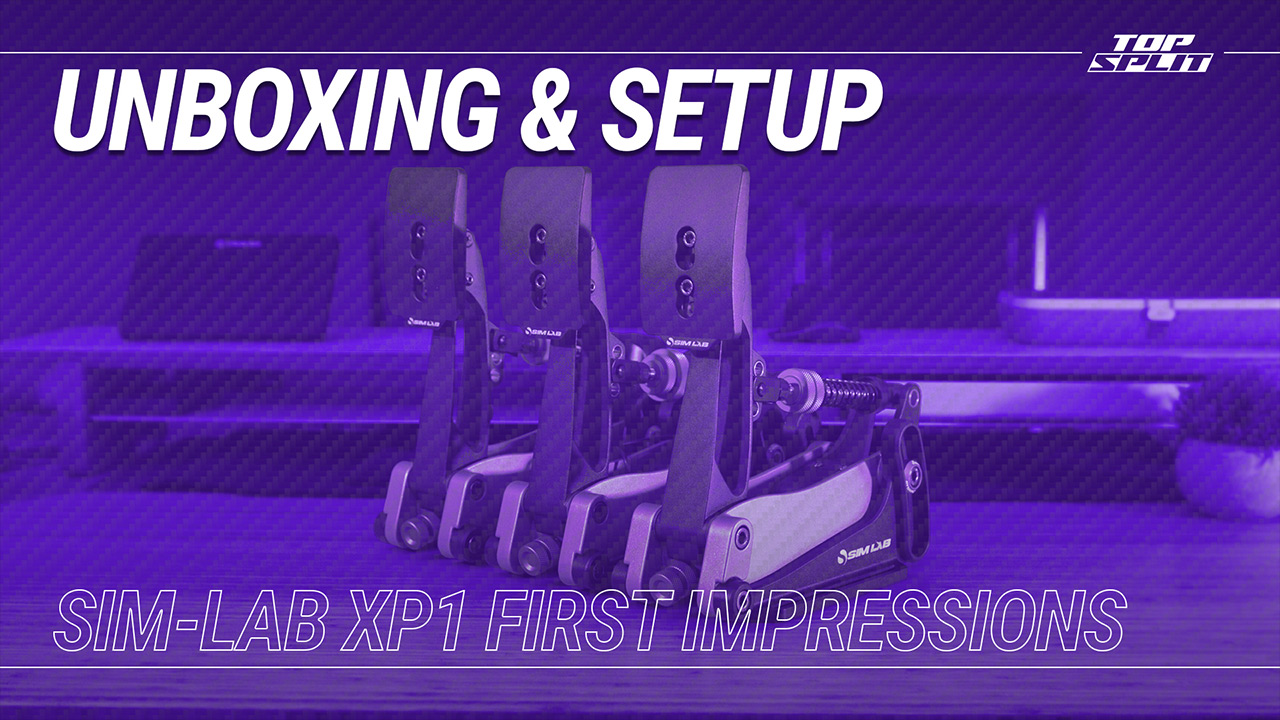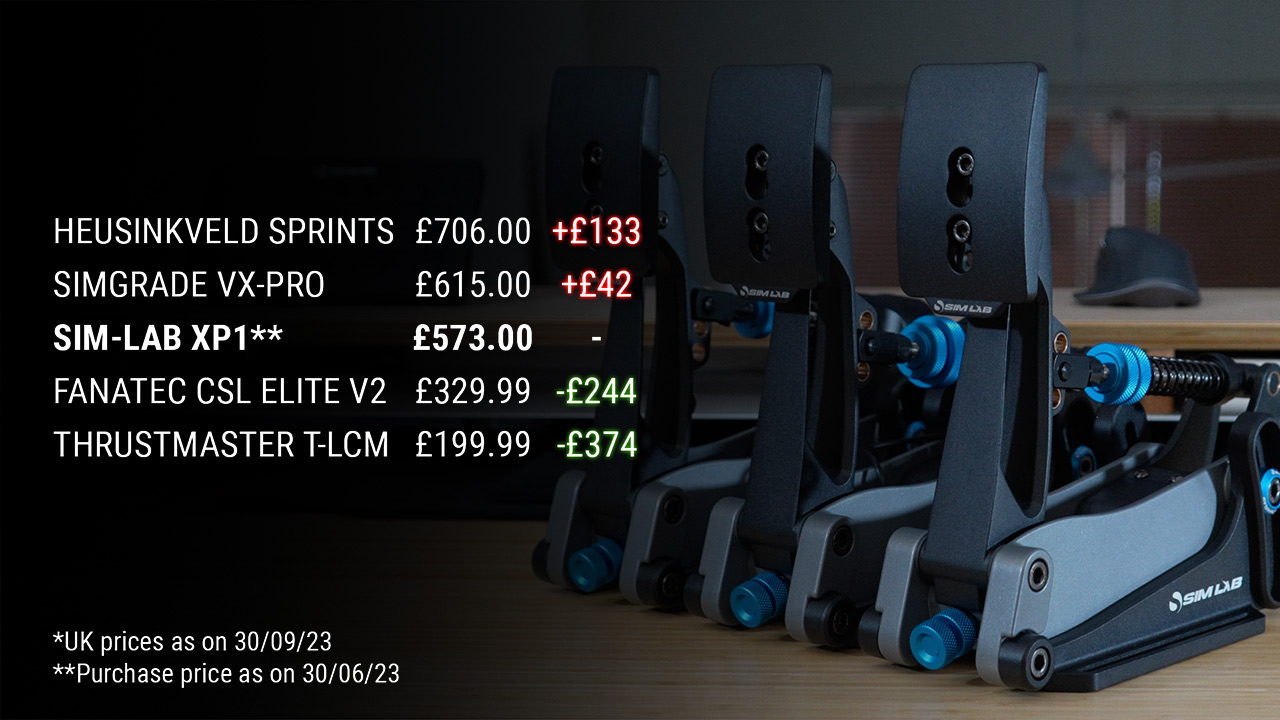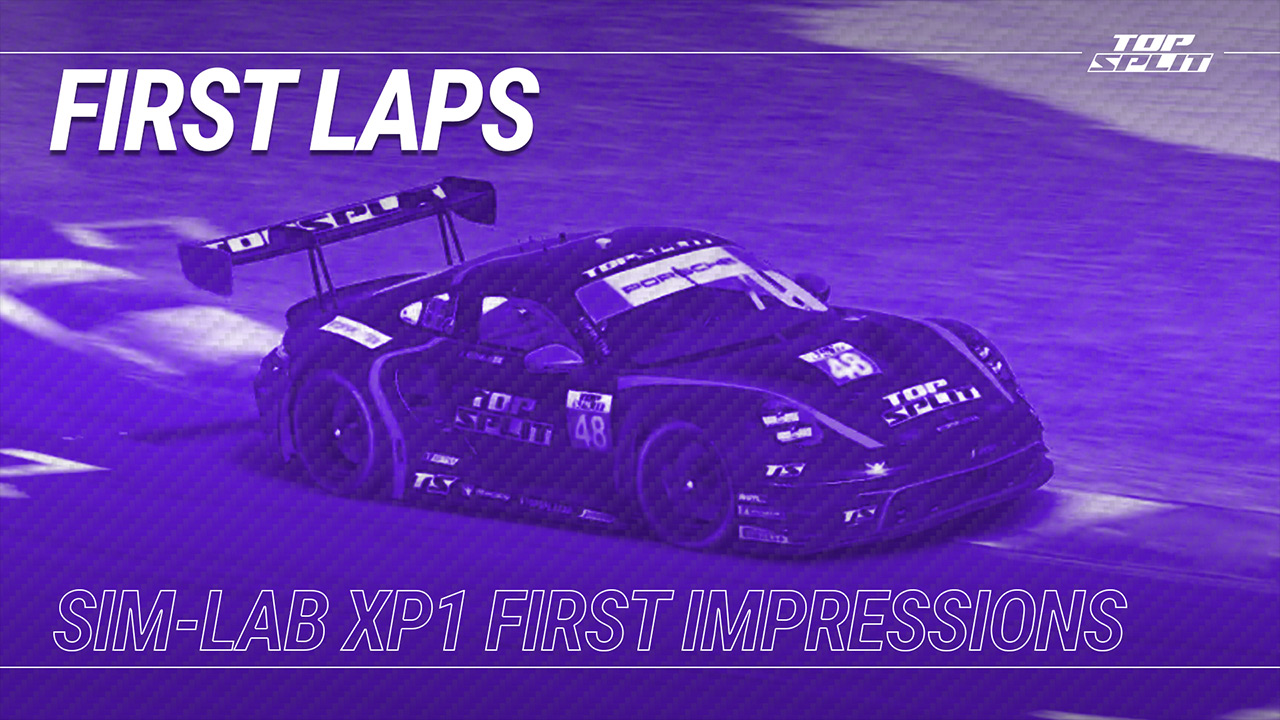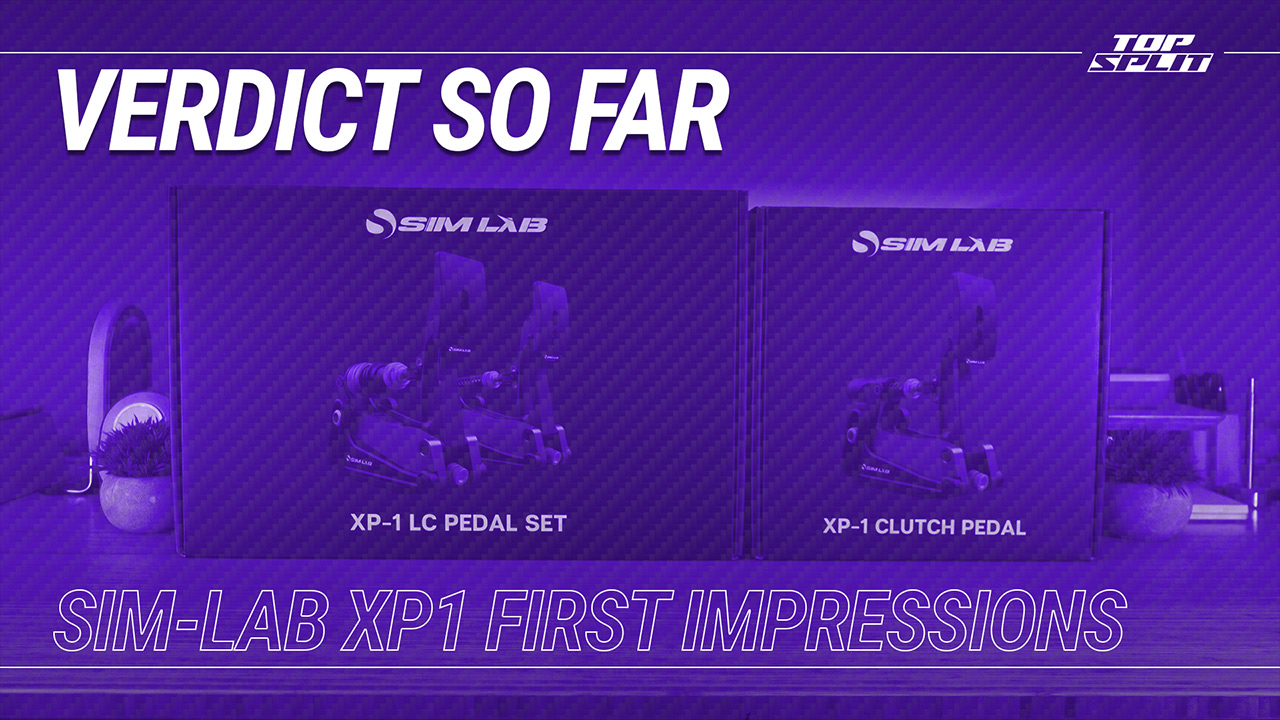Sim-Lab are known for their popular sim racing rigs – but can their first loadcell pedals live up to the hype?
WATCH: These Pedals Are CRAZY! | Sim-Lab XP1 First Impressions
I’ve spent 24 full hours using the brand-new Sim-Lab XP1 pedals. Here’s my first impressions, and what you should know if you’re considering picking up a set for yourself.
Before we start: I’ve paid for these pedals with my own money. I’ve not been sent them to review, I don’t have any contacts at Sim-Lab, and I don’t have to “keep anyone happy” – I’m a customer, just like you guys, so you’re getting my pure, unfiltered thoughts.

Image: TOP SPLIT
Unboxing & Setup
I purchased all three pedals – the throttle and brake, plus the separate clutch – for £573.00, excluding import charges to the UK – putting them in the mid-range price tier alongside the Heusinkveld Sprints and Simgrade VX-Pro’s, but above entry-level loadcells like the Fanatec CSL’s and Thrustmaster T-LCM’s.

Image: TOP SPLIT
In box, the pedals were secured in moulded foam, and came with the control box, connecting cables, mounting hardware and a variety of extra springs and elastomers. You will need a 5mm allen key and a 9mm wrench to install them, but the process was simple and straightforward with my GT1 EVO footplate, and the pedal slots provide plenty of mounting options.
The throttle is one long spring. It’s light and buttery smooth, with a minimal amount of travel, so going from no throttle to 100% can be achieved in a flash. The brake uses a spring and an elastomer, with a clear change in resistance between the two which should make consistent braking a breeze. The clutch uses a spring and a two-stage setup – the change in pressure should make finding the bite point second nature.
Booting up the PC, Sim-Lab’s RaceDirector software is a basic bit of kit, but it’s got everything you need. Calibration was a simple task, and full curve customisation for each pedal is all right there at your fingertips, and is quick and easy to adjust on the fly.

Image: TOP SPLIT
First Laps
Loading up iRacing, I tried these pedals in a wide range of cars – from the MX-5 and GT cars to open-wheelers and oval machines. Right out of the box, the default setup felt… pretty good. Coming from non-loadcell pedals, the huge change in brake pressure took some getting used to, but after a few laps, I started to feel a connection to the car that I’d never quite experienced in sim racing before.
Each pedal felt smooth, consistent and predictable. As they’re so sensitive, I did have to add some deadzones – but that was quick and easy in the RaceDirector software.
The brake is – of course – the most important pedal of the three. It makes all the difference to your confidence, consistency and laptime, and I’m happy to say that after some time with it, I could confidently hit the all-important 80% range. Any more than that is a very clear change in the pressure you need to apply, which makes building your muscle memory so much simpler.
I headed to my most driven car and track combo – the Porsche GT3 at Watkins Glen – and within just a few laps, I was already within tenths of my lap record.
I can’t understate just how these pedals make me feel as if me and the car are now as one. Braking feels… natural. Locking up feels predictable. I may not be immediately faster, but I can tell that as my bond with the pedals grows, and as my muscle memory becomes second nature, the potential I have – both in consistency and in speed – is much higher than before.

Image: TOP SPLIT
Race Experience
My first race at the Red Bull Ring in the MX-5’s was nothing to write home about, but it was a strong first outing for the XP1s. With each lap I gained confidence, braking became more consistent, and by the end of the race, I was lapping several tenths quicker than my quali time.
Where these pedals really shine is in wheel-to-wheel battles. With how smooth and predictable these pedals are, I’m confident that I can place the car exactly where I want. With non-loadcell pedals, I’ve always felt a bit uneasy in close racing, but with the Sim-Lab XP1’s – even after only 24 hours of use – I’m quickly finding an all-new confidence when fighting for position. The fear that I’ll lose control when taking unconventional lines or reacting to spins ahead is diminishing with every lap, and with this new-found belief, my lap-to-lap consistency is stronger than ever.
Despite these positives, this first race did reveal a negative. On all three pedals, I’ve flipped the pedal plates upside down and bolted them into the lowest possible position – so the balls of my feet meet the middle of the pedals – but this leaves a circular hole right where my feet touch the pedals. With the softer throttle and clutch it’s fine, but with the much stiffer brake, by the end of a 20 lap race, I was starting to develop some pain in the ball of my left foot.
Now, I’m certain this is something I can dial out by adjusting the pedal plates, brake stiffness and more – but with the pedals as they are out of the box – I had to switch from socks to a pair of sim shoes to avoid any more discomfort.
Jumping from the MX-5 into races in other machinery was surprisingly effortless. Hopping from car to car is never a completely smooth experience no matter the hardware, but I was pleasantly surprised that the muscle memory I built in the MX-5 quickly translated to other cars, making switching machinery much easier than with non-loadcells. GT4, GT3, F4 – even on dirt – without a doubt, these pedals enhanced my racing experience, and I’m sure that as I grow with them, they’ll continue to enhance it further.

Image: TOP SPLIT
Verdict So Far
All in all, after 24 hours with the Sim-Lab XP1 pedals, I have to say I’m very impressed. They’re smooth, reliable, accurate, precise – everything I’d want from a set of loadcells, especially ones in this price range. The confidence they give me on track is worth its weight in gold, and as my muscle memory builds, I can see a clear path to even greater confidence, consistency and speed as time goes on.
Straight out of the box, they’re a joy to use, and whilst I haven’t experimented with all the adjustments quite yet – that’ll come in my full review in the next few weeks – I’ve no doubt that with the sheer level of customisation available, I’ll be able to dial in the pedals exactly to what suits me.
Could the Sim-Lab XP1’s be the new mid-tier standard? It’s too early to say for sure – but they’ve certainly got the potential to match and even surpass competitors like the Heusinkveld Sprints. These pedals have made me fall in love with sim racing all over again – but only time will tell if the honeymoon period will last.
Bringing together the price, the performance and alternatives in the same price range, I’m giving the Sim-Lab XP1 pedals a First Impressions score of… 9/10.

Image: TOP SPLIT
I hope you’ve found my first impressions of the Sim-Lab XP1’s helpful – and if you have, please share it around!
I’ll be using these pedals on the daily, so if you have any questions or queries, ask away in the comments below.
My full review – and whether or not I’d ultimately recommend the XP1’s – will be coming in a few weeks time, so stay tuned.


